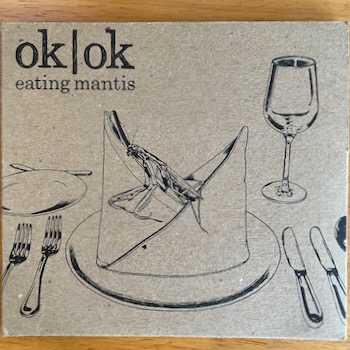(For my students in 2025 Composing for Improvisers class at Bennington College)
March 14, 2025 Kyoko Kitamura
In this class, we approach Structured improvisation as one of many ways to create an environment where participants can engage in a musical conversation using a shared set of building blocks. (Many words can be used in place of “building blocks”, e.g., parameters, conditions, rules, etc.). The building blocks can help shape the improvisation, much like the framework of a language or the topic of a discussion. While there are infinite possibilities, some of the most common building blocks include:
- Melodic idea
- Chord changes
- Time signature
- Rhythmic feel (e.g., swing)
- Tempo
- Rhythmic figures
- Pitch
- Timbre (e.g., “guttural”)
- Time duration (e.g., stopwatch music, durational music)
- Other sound sources (e.g., rocks, books)
- Volume
- Speed changes
- Text (e.g., setting a poem to music)
- Key words
- Agreed upon conduction signals
They provide both support and contrast, ensuring that improvisation has direction while leaving room for spontaneity. If participants have played together before, they may instinctively understand certain shared musical ideas, but establishing these building blocks will pretty much ensure that the musical conversation will develop meaningfully, even with participants who are new to the ensemble.
It will also often provide an ending. A well-shaped ending can elevate an entire piece, yet it often receives less attention than the beginning or the middle during the composing process. By understanding the importance and the role of the future ending, we can sometimes be more in the present.
By intentionally shaping these parameters, we harness the strengths of the group. While there may be a main composer guiding the structure, every participant is also an improviser-composer, contributing in real time. We introduce elements of unpredictability through individual decision-making (those dopamine hits that keep us engaged!) and the work gains the potential to become much greater than the sum of its parts.
Through this process, the ensemble builds its own vocabulary, expanding its range of shared building blocks and deepening its musical connection. For some, this will be an entirely oral and aural experience; for others, written notation will play a role. Many working musicians today will engage with a combination of both.
Ideally, we want to surround ourselves with musicians who are interested in exploring this music together—and then just keep playing. Practice, play, repeat. You can experiment with the range of building blocks, from none (free improv) to fully-notated material. More than the final product, it is the process itself—the act of creating, listening, and responding in real time—that defines this music.
Writing can play a crucial role in this process, offering a way to revisit, refine, and solidify musical ideas, allowing us to track our progress and communicate ideas with others. Writing can travel over time and geographical distance; however, this can also introduce challenges, as written material tends to take on a life of its own and can be misinterpreted. Therefore, an oral component is essential. The strongest musical bond, in this type of music, is the connection formed by those playing in the same room.
This is communal music with its own deep histories. Even when solo music emerges from this practice, it remains deeply rooted in the communal experience. My own trajectory is via Black music, having been mentored by many great Black musicians, along with my background in European classical music and my Japanese heritage. It will be different for every one of us, allowing us to develop our own individual sound. Think of structured improvisation as the sweet spot between preparation and spontaneity, built on a foundation of personal and communal history, allowing for creative freedom within meaningful interaction with other great players. Above all, strive to make each other sound great and enjoy the process.
